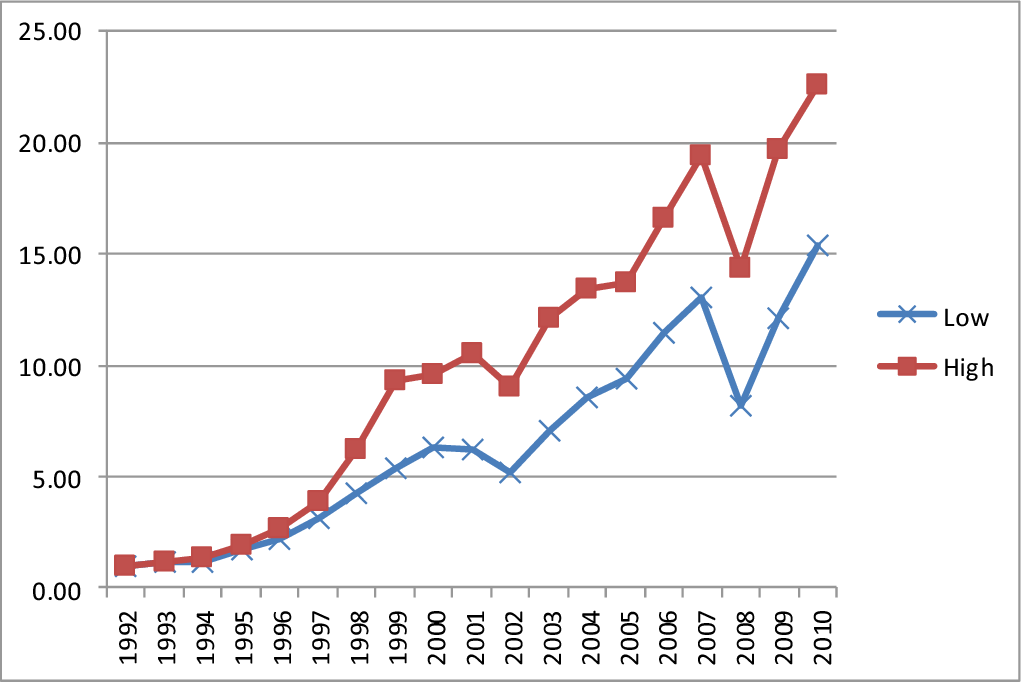The Impact of Corporate Sustainability on Organizational Process and Performance

- Organizations voluntarily adopting environmental and social policies represent a fundamentally distinct type of modern corporation, characterized by a governance structure that takes into account the environmental and social performance of the company, in addition to financial performance, a long-term approach towards maximizing inter-temporal profits, and an active stakeholder management process.
- Societal concern about sustainability, at both the level of the firm and society as a whole, has been growing from almost nothing in the early 1990s to rapidly increasing awareness in the early 2000s, to being a dominant theme today.
- The High Sustainability firms in this study pay attention to their relationships with stakeholders—such as employees, customers, and NGOs representing civil society—through active processes of engagement.
- The Low Sustainability firms, by contrast, correspond to the traditional model of corporate profit maximization in which social and environmental issues are predominantly regarded as externalities created by firm actions which only need to be addressed if required to do so by law and regulation.
- The group of firms with a strong sustainability culture is significantly more likely to assign responsibility to its board of directors for sustainability and to form a separate board committee for sustainability. Moreover, High Sustainability companies are more likely to make executive compensation a function of environmental, social, and external perception (e.g., customer satisfaction) metrics.
Author Abstract
We investigate the effect of a corporate culture of sustainability on multiple facets of corporate behavior and performance outcomes. Using a matched sample of 180 companies, we find that corporations that voluntarily adopted environmental and social policies by 1993-termed as High Sustainability companies-exhibit fundamentally different characteristics from a matched sample of firms that adopted almost none of these policies-termed as Low Sustainability companies. In particular, we find that the boards of directors of these companies are more likely to be responsible for sustainability, and top executive incentives are more likely to be a function of sustainability metrics. Moreover, they are more likely to have organized procedures for stakeholder engagement, to be more long-term oriented, and to exhibit more measurement and disclosure of nonfinancial information. Finally, we provide evidence that High Sustainability companies significantly outperform their counterparts over the long-term, both in terms of stock market and accounting performance. The outperformance is stronger in sectors where the customers are individual consumers, companies compete on the basis of brands and reputation, and in sectors where companies’ products significantly depend upon extracting large amounts of natural resources.
Paper Information
- Full Working Paper Text
- Working Paper Publication Date: November 2011 (Revised May 2012)
- HBS Working Paper Number: 12-035
- Faculty Unit(s): Accounting and Management